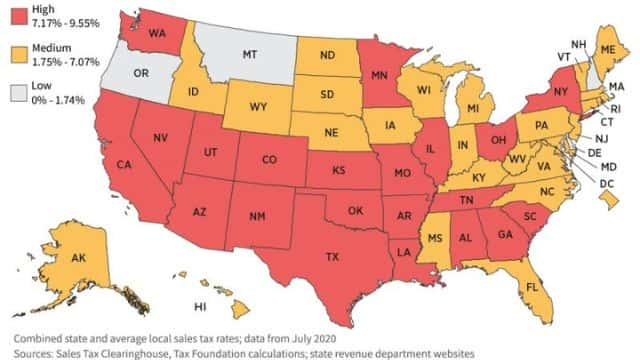A new IRS Revenue Procedure may enable wealthy families to save millions of dollars in taxes. By making the Deceased Spouse Unused Exclusion available for up to five years following the passing of a married couple’s first spouse, the new process enables more adaptable estate planning.
Currently, a person is not subject to federal gift or estate tax if they contribute $12.06 million or less to beneficiaries during their lifetime or after death (aside from their spouse, a U.S. citizen, to whom these gifts or bequests are not subject to tax).
The unified estate and gift tax credit for the year 2022 is this $12.06 million sum, which is referred to below as the “exemption” for convenience. A 40 per cent estate or gift tax is applied to gifts that exceed this exemption.
A married couple should be allowed to give $24.12 million to their children or any planned non-spousal beneficiaries, either during their lifetime or after death, without having to pay estate or gift taxes on it.
Before 2011, to avoid wasting their exemption, the first-to-die spouse had to use their exemption completely both during their lifetime and at death.
The first-to-die spouse’s Will or Revocable Trust was frequently used to fully fund a “credit shelter” trust (also known as a “bypass trust,” “B trust,” or “family trust”).
But since of 2011, the tax code permits “portability” of an unused inheritance tax exemption from a deceased spouse to the surviving spouse. Instead of creating a credit shelter trust to use the first-to-die spouse’s exemption, portability has made estate planning more flexible so that the exemption of the spouse who dies first is not necessarily “wasted,” even if all or most assets are given directly to the surviving spouse (or in a marital trust) without using any exemptions.
Because the assets included in the surviving spouse’s taxable estate after death receive a step-up in tax basis, portability may also enable improved income tax planning.
(It is significant to note that, for big estates, credit shelter trust or other trust planning is frequently advised due to the substantial estate and generation-skipping transfer tax benefits it can offer. Numerous non-tax benefits of trusts are also possible.)

For the surviving spouse to inherit the “Deceased Spouse Unused Exclusion” (DSUE) through a portability election on that return, a Form 706 federal estate tax return for the deceased spouse must be submitted.
This is the only restriction to the helpful portability provision. Only estates with gross assets at the time of death that are greater than the decedent’s applicable exemption are legally obligated to submit an estate tax return, regardless of whether or not they use the DSUE.
The law would not need an estate tax return, for instance, if a spouse passed away this year leaving the surviving spouse $12 million in assets (without any past gifts).
However, because the surviving spouse cannot use the DSUE if an estate tax return is not filed, there is a chance that the estate of the surviving spouse will have to pay close to $5 million in taxes that it could have avoided.
The IRS acknowledged that many surviving spouses—and frequently, their advisors—have been perplexed about the proper course of action as a result of the requirement to file an estate tax return solely to make the portability election to use the DSUE of the first-to-die spouse in an estate with gross assets below the decedent’s exemption, without a legal requirement to do so.
In the nine months following the decedent’s passing, the estate tax return is due (with an automatic six-month extension available if requested before the due date).
The IRS can give a retroactive extension of time for filing if the return is not required by law (because the gross estate assets are less than the decedent’s eligible exemption).
Normally, to request this extension, the estate of the deceased spouse had to submit a private letter ruling request under Treasury Regulations Section 301.9100-3, which is an expensive and time-consuming process that demanded proof of a valid reason for the estate tax return’s late submission.
The IRS created a streamlined filing process without a private letter ruling request in 2017, provided that the estate tax return was filed within two years of the decedent’s death and (ii) the return was not required by statute (because the gross estate assets were less than the decedent’s available exemption).
This was done in recognition of the fact that numerous families are impacted by the failure to timely file an estate tax return solely to elect portability. Even with the simplified process, many families missed the two-year window and had to pay for private letter decision petitions.
Read more:-
- Checks for Tax Rebates Are Being Sent to Citizens by 14 States. If So, Is Your Name There?
- Calfresh Adult Employment Trends
- Senator Warren Has Proposed a Bill to “Simplify” Tax Filing.
The potential to claim the DSUE through a late filing might result in millions of dollars in tax savings for households with significant wealth. This is especially relevant considering the extremely high exemptions currently allowed ($12.06 million per person with inflation adjustments via existing law until 2025).
Any individual passing away in 2026 or later will see their high present exemptions cut in half. With the huge exemptions available under present legislation, many families may not have an estate tax issue, but they very well may have to pay estate tax if the second spouse passes away when the exemptions are reduced in half.
Claiming the DSUE of the first-to-die spouse in specific situations may assure that no inheritance tax is required, or, at the very least, result in large estate tax savings.
The estate tax due upon the passing of the second spouse is shown in the example below, together with $24.12 million in taxable assets, to demonstrate the possible tax savings provided by the new Revenue Procedure.


